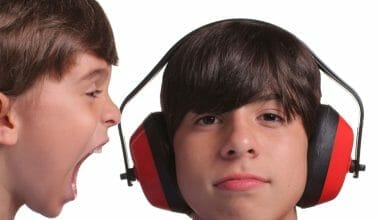If you’re wondering how to quiet power tools, there are several factors you can take into account. These include using a battery-powered tool instead of a corded one, cleaning power tools regularly to avoid overheating, and switching to induction motors.

In this article, we’ll go over some of the most effective ways to keep power tools quiet and reduce noise. But before we get into the specifics, we’ll first take a closer look at how to clean your power tools.
Switching to battery-powered tools
If you are looking for tools that run quietly, you should consider making the switch to battery-powered tools. You’ll be working on a smaller scale, but they’ll be quieter, too. And the benefits don’t end there. There are many benefits to switching from gas-powered tools to battery-powered tools, including lower fuel costs, lower noise levels, and reduced emissions. Here are a few reasons why.
Battery-powered tools are often more lightweight and more convenient. You don’t have to worry about cords or oil changes. Moreover, they don’t generate exhaust or gas fumes. There are no spark plugs to replace. Plus, they don’t require oil changes or gas fill-ups. These benefits make them more environmentally friendly than gas-powered tools. And they don’t have to be recharged frequently, either.
Cleaning power tools regularly to prevent overheating
Power tools are very important and play an essential role in completing projects. If you use them, you’ve likely invested a large amount of money in them. Performing regular maintenance and cleaning on these tools can extend their useful life and prevent them from overheating. Listed below are some tips to keep your tools in top condition. Keep reading to learn more. Clean Power Tools Regularly
When cleaning a power tool, use a damp rag to wipe off any buildup. You can also use compressed air. You can also use a gas duster, which is a compressed air can with a trigger. The compressed air is ozone-safe and safe for electronic parts. Lastly, you can clean your tools with a degreaser. You can purchase heavy-duty degreasers from Simple Green.
Adjusting blade height
You’ve probably heard that power tools can be noisy, but there are things you can do to reduce the noise. These tools make noise while they are running, and the sound can be bothersome not only to yourself, but to the people around you, too. One good way to minimize the noise from your table saw is to use rubber pads on its table legs. Another tip is to adjust the blade height slightly higher than the work you’re doing. You can also purchase blades that are specifically designed to make the power tools quieter than regular ones.
Switching to induction motors
One of the best ways to make your power tools more silent is to switch to induction motors. These motors have low resistance and very low ripple, but they also have a large disadvantage: they’re not very efficient. A synchronous motor has good starting torque and low ripple, but its efficiency is low and its power rating is small. Switching to an induction motor means a more quiet power tool, so it’s worth it to make the switch.
If you don’t want to switch to induction motors, you can still get a quiet tool by adjusting the speed of the tool. Simply increase the switching frequency. If you can’t change the speed of the motor, then you can install a du/dt on the sine wave filter. You can also reduce noise by increasing the length of the power cord. The induction motor drive is also easier to quieten than the brushed one.
Switching to soundproof boxes
A good way to get a noisy power tool to run quietly is by switching to a soundproof box. Many companies offer these boxes, and they are a worthwhile investment if you use power tools frequently. Soundproof boxes are available in different sizes and designs, depending on your needs and your budget. To start, you should check the airflow of your tools. In general, you should aim for three to four CFM per horsepower of motor size.
Another option for noise reduction is to install earplugs or headphones and use a noise-reducing tool. Noise reduction is not the only benefit of a quiet power tool. Proper maintenance and proper care will help to keep them silent. If you use a noisy power tool, you can easily damage your eardrums. But you should remember that a noisy power tool will not necessarily lead to more damage if it is not properly maintained.
